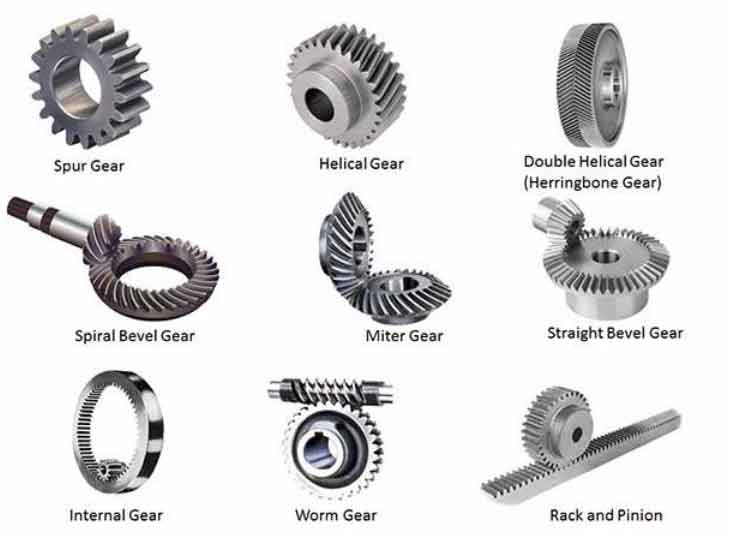Helical gears and bevel gears are both important types of gears commonly used in various mechanical systems. While they share some similarities, they also have distinct characteristics that make them suitable for different applications. Let’s explore their comparative analysis:

- Tooth Orientation:
- Helical Gears: Helical gears have teeth that are cut at an angle, resulting in a helix shape. The teeth are oriented at an angle to the gear axis, allowing for gradual engagement, which reduces noise and vibrations.
- Bevel Gears: Bevel gears have teeth that are cut on conical surfaces. The teeth are oriented at an angle to the gear axis, enabling power transmission between intersecting shafts.
- Axial Thrust:
- Helical Gears: Due to the helix angle, helical gears generate axial thrust along the gear axis during operation. This thrust needs to be accommodated by suitable thrust bearings.
- Bevel Gears: Bevel gears also produce axial thrust, but it is typically lower compared to helical gears.
- Efficiency:
- Helical Gears: Helical gears provide higher efficiency than bevel gears due to their gradual engagement and larger contact area between teeth.
- Bevel Gears: Bevel gears have slightly lower efficiency compared to helical gears due to the sliding action between teeth during meshing.
- Noise and Vibration:
- Helical Gears: The helical tooth design helps in reducing noise and vibration by distributing the load over multiple teeth during engagement.
- Bevel Gears: Bevel gears tend to generate more noise and vibration compared to helical gears, particularly at higher speeds.
- Applications:
- Helical Gears: Helical gears are commonly used in applications that require high-speed and high-load transmission, such as automotive transmissions, industrial machinery, and power generation systems.
- Bevel Gears: Bevel gears are suitable for applications where power transmission is required between intersecting shafts, such as differential gears in vehicles, angle drives, and hand drills.
- Gearbox Arrangement:
- Helical Gears: Helical gears are often used in parallel shaft arrangements, where the gears are placed on parallel axes.
- Bevel Gears: Bevel gears are commonly employed in perpendicular shaft arrangements, where the gears are placed on intersecting axes.
- Manufacturing Complexity:
- Helical Gears: Manufacturing helical gears can be more complex than bevel gears due to the angled teeth, requiring specific cutting techniques and specialized machinery.
- Bevel Gears: Bevel gears are relatively easier to manufacture compared to helical gears, as they can be cut using standard gear cutting methods.
In summary, helical gears and bevel gears have their own advantages and applications. Helical gears excel in high-speed and high-load applications, offering better efficiency and reduced noise/vibration. Bevel gears, on the other hand, are suitable for transmitting power between intersecting shafts. The choice between the two depends on the specific requirements of the application, such as the desired speed, load, noise level, and spatial constraints.
